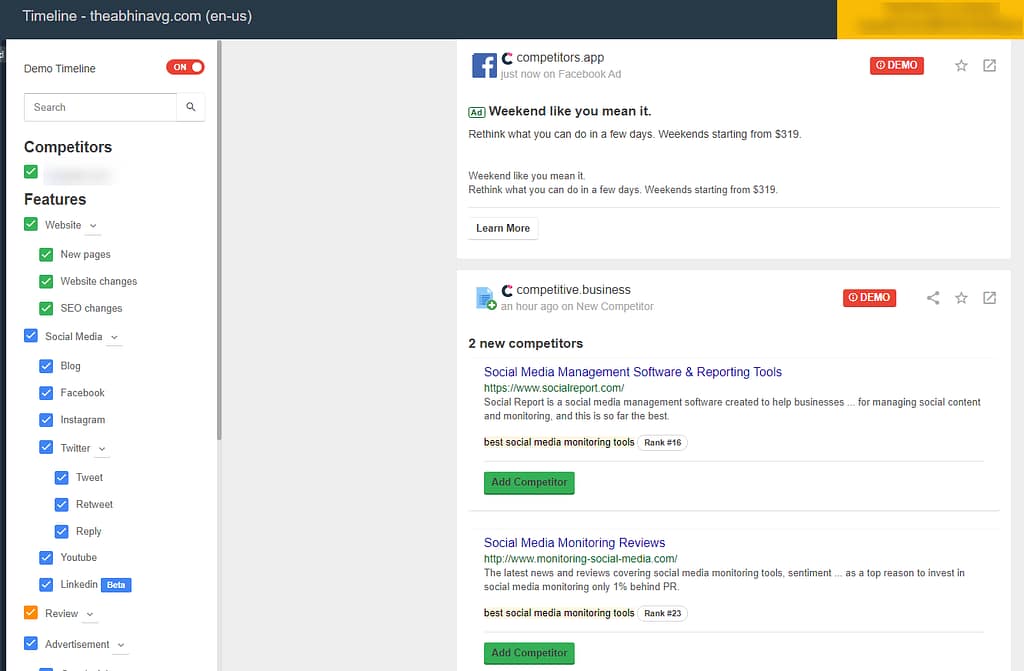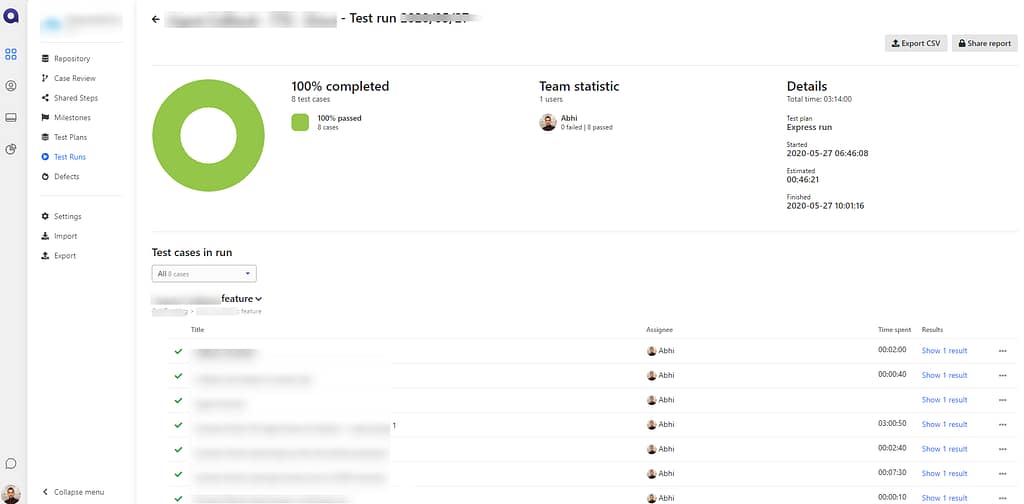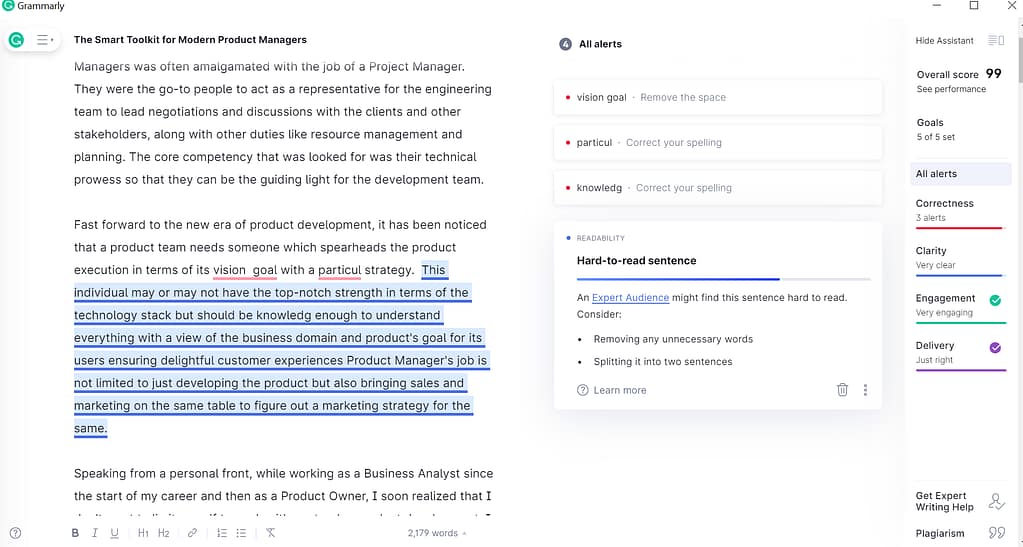Considering the job market scene five years ago, the role of Product Managers was often amalgamated with the job of a Project Manager. They were the go-to people to act as a representative for the engineering team to lead negotiations and discussions with the clients and other stakeholders, along with other duties like resource management and planning. The core competency that was looked for was their technical prowess so that they can be the guiding light for the development team.
Fast forward to the contemporary era of product development, it has been noticed that a product team needs someone who spearheads the product execution in terms of its vision and goal with a particular strategy. This individual may or may not have the top-notch strength in terms of the technology stack but should be knowledgeable enough to understand everything with a view of the business domain and product’s goal for its users ensuring delightful customer experiences. Product Manager’s job is not limited to just developing the product but also bringing sales and marketing on the same table to figure out a marketing strategy for the same.
Speaking from a personal front, while working as a Business Analyst since the start of my career and then as a Product Owner, I soon realized that I don’t want to limit myself to work with post-sales product development. I started getting involved with the pre-sales wing of my organization to have a birds-eye view of what customer wished, how I can work towards it with the team and then ultimately assist it in reaching a commercial proposition. Now, since more than a year, I joined an organization in the capacity of a Product Manager, and it has been a colossal learning experience to view and manage things from the vantage point of being a manager myself.
I have shared about my experiences with pre-sales and post-sales processes in my post “My First Post – An Intro To Myself with Lessons Learned“
During my rookie ride of being a Product Manager, I was able to comprehend that I will not be able to everything on my own and I certainly need to get smarter to become Modern Product Manager who always has the data to answer things rather than skimming through my tons of scribbles giving some vague replies. I came across some fantastic applications that helped me took off my career as a Product Manager, and I would like to share these smart gizmos bundled together of what I would like to call them as “The Toolkit for Modern Product Managers”.
Ideation:
This is the first stage where a Product Manager must be able to present an idea about your understanding about the product visions and goals to the stakeholders, whether they are in the vicinity or are at a remote location. As shared above, is a Business Analyst initially, I had a robust battle-tested set of tools to employ here.
Stories on Board
Once you have an SOW in hand form the stakeholders, it is expected that you should put up an initial set of understandings in a readable and understandable format such that it can be used as a base to take the communication further with internal and external contributors. I have found story mapping as the numero uno technique to present ideas, and I have certainly not come across a better way to achieve this but using the Stories On Board application.

Stories On Board allows you create epics, related story cards and freedom to add any level of details along with the super helpful easy drag and drop feature. This can also help you to divide the whole product idea into must-have, should-have, etc. releases using MoSCoW analysis. Not to forget its extremely cool Jira and Slack integration that helps speed up the collaboration to the next level.
Invision
Once you have consolidated a fair idea about the product idea, the logical next step should be to represent that idea into something tangible such that all the stakeholders can perceive the end goal of the product and move from an ideation stage to something more of constructive criticism and have a reliable form of product vision set.

I would highly recommend using Invision App as your tool to create something quick and dirty using their Freehand Mode. This allows you to create rough sketches in a matter of minutes and will enable you to make changes on the fly with, of course allowing all the stakeholders to post their comments and ideas.
Market Research & Data:
Crunchbase
When you talk about products, you often discuss any real competition. It is of utmost importance that you know your challenges in and out so that you can devise a product vision that could take them head-on or circle around them.
I find Crunchbase as the most recommended tool to gather first-hand information about the competition and get a lay of the land. It may also help product teams, especially startups, to understand the funding trends, industry trends and acquisitions happening around you or your business domain.
Competitors App
Building and selling products are one side of the game, but staying on top of your competition is of paramount importance. Owing to this digital age, everyone has a digital marketing strategy and a lot of content over the vast worldwide web, which makes it difficult for a Product Manager to track all of them regularly.

But then I came across this absolutely fantastic application called Competitors App where you can register some brief details about your business/product and then add a list of competitors that you intend to keep a watch on and Voila! You will have a 360-degree view with all the new features or updates being churned out by your counterparts in your inbox. The Competitors App helped me up to my game when it comes to creating product roadmaps and changing the priorities time and again. It lets you become a pro-active Modern Product Manager who holds the key to the product’s vision but also making sure that your team has enough arsenal in the belly to fire some excellent features out, beating the competition.
Google Analytics
This goes without mention that Google Analytics is kind of a must-have to keep track of any product performance and have a clear view of who your user is and where they are coming from helping you design marketing expenditures around it.
But, in my tenure as a Product Manager, it gave me an opportunity to deep dive into Google Analytics to use it as an original medium of understanding traffic source attribution for the visitors on our products. It even has helped us to be able to help pour customers giving answers supported with actual data from Google Analytics.
Collaboration
Slack
Honestly, after starting using Slack, I thought, why didn’t I use it earlier. There is nothing like Slack when it comes to having a great communication tool along with one that can be your assistant as well.
That’s true! The ability to set reminders for yourselves and even your team members is just brilliant, and I cannot boast enough about this. It makes you do away with regular calendar reminders that you may or may not miss, but a slack reminder is something that you would rather not miss as it is coming up just like any other message. An of course, how can we skip the superb library of apps and bots that Slack has to offer and my personal favourites are – Standuply, Jira Cloud, Google Calendar, Google Drive.

And the story does not end there, our IT teams have deployed these interactive alarms that come up in specific channels to grab related team member’s attention. These alarms come up just like any other slack message which is custom configured to add more relevant details for the support team to look at and execute a resolution consequently.
Miro
I heard a lot about Miro, but I never got a chance to get my hands dirty on it until I attended the superb virtual conference called the Agile Virtual Summit. Our super host Adam Weisbart allowed us to collaborate with fellow attendees over a Miro board where we were supposed to have our Lean Coffee breakouts.

This is the first time I got hands-on experience with playing around Miro, and I freakin loved it. It gives you a sense of complete freedom on how you want to run your collaboration sessions and promotes each member’s participation. We first decided on a list of topics, then voted for each and started discussing our thoughts about each from highest voted to lowest vote as per the time. In another virtual event called Agile Games Summit, I got a chance to play some fun agile games using Miro boards which did become intense which we were not expecting, thanks to Molood Ceccarelli’s “The Game of Circles“.
I am in love with Miro boards so much so that I will soon be starting a meetup group where we can just ideate on random topics using Miro Boards.
Documentation and Tracking
Jira
When you mention modern project management, you will come across Jira. Yes, there are many other useful project management tools available in the market, but I still think that Jira is one of the most common applications used by teams of any size to document, plan and manage their tasks especially in an agile team.
However, going around Jira could be a bit overwhelming for some, owing to its complex navigation and features related to workflow and filters. Once you get over the learning period, Jira can be one powerful centre of the universe for your product teams. In my context, I can manage our new feature development team and support team on different boards using scrum board in one while kanban in the latter. The task management, report generation, filters and comments are one of the most popular features you will use regularly.
Confluence
Confluence should undoubtedly be your first choice when it comes to creating documentation spaces for yourself or your teams. You can manage each documentation post in specific areas allowing you to build a structured document library for you and your team members.
I generally use the confluence spaces to document our team retrospectives, meeting notes, go-live checklists and techno-functional documentations including initial product requirement documents.
Qase.io
Being responsible for managing and ensuring QA for each build, I wanted to have a dedicated tool where I can let our test engineers document test cases that can be referred to any point in time when a related feature is about to be released with an update. I tried to set this up using Jira and Confluence, but I found it too complicated to manage. I then went out to search for a specific tool that could serve the purpose, and my search ended at this fantastic tool called Qase.io

Qase.io not only allows you to document each test case with steps and related outcomes but also will enable you to maintain them into segregated test suites which let the QAs pick a suite of test cases for a particular feature without going through the hassle of searching test cases and making a list every time. It also offers the option to document your automated test cases. Not to forget the seamless Jira integration which allows to create test runs on Qase.io itself and raise bugs which are automatically added to your Jira Project linked to your Qase.io test suite. There is a freemium option to start with, and then you can scale to a premium subscription as per your requirements.
Grammarly
You can be very confident about your grasp on the language, but it certainly will need improvement every time, especially when it comes to people who come from non-English regions of the world.

I highly recommend using Grammarly, which takes your document quality beyond the spell and grammar check to a more appealing one which will undoubtedly help you grab the attention of the readers. Its AI-powered smart writing tool helps you find better words along with regular spell and grammar check, and in case of premium, it even allows you to set the goal for your document tone and mood to guide you accordingly.
Conclusion
It has been noticed that in the job market trends where other job demands have maintained a 6% rate since quite some time, the need for Product Managers role has increased by over 30%, and the same trend can be seen in the salary packages. There is no better time to choose a Product Manager path than earlier, and with some of these smart applications mentioned above, you can undoubtedly kickstart your journey as a product manager with a giant leap forward.
However, these tools are not just for Product Managers, but they can be employed by any professional to rise above the rest. Share your experiences with applications mentioned above or suggest some tools that you use in the comments below.


